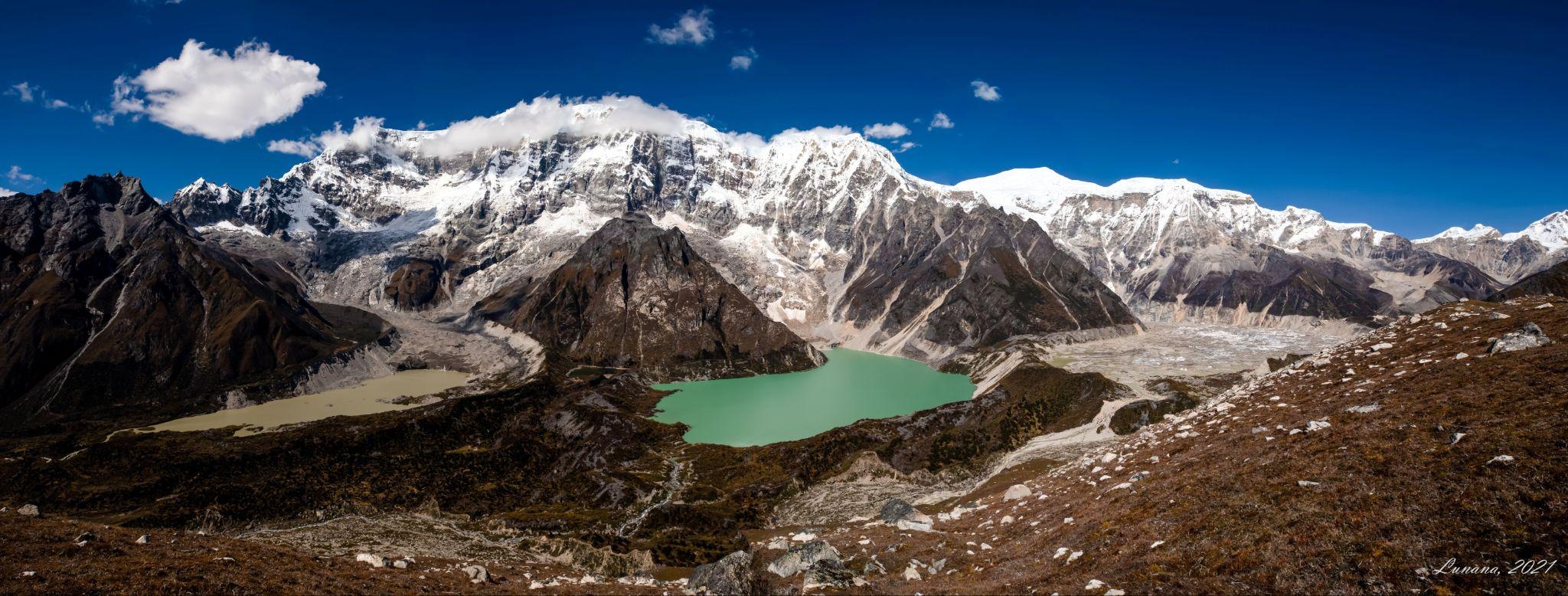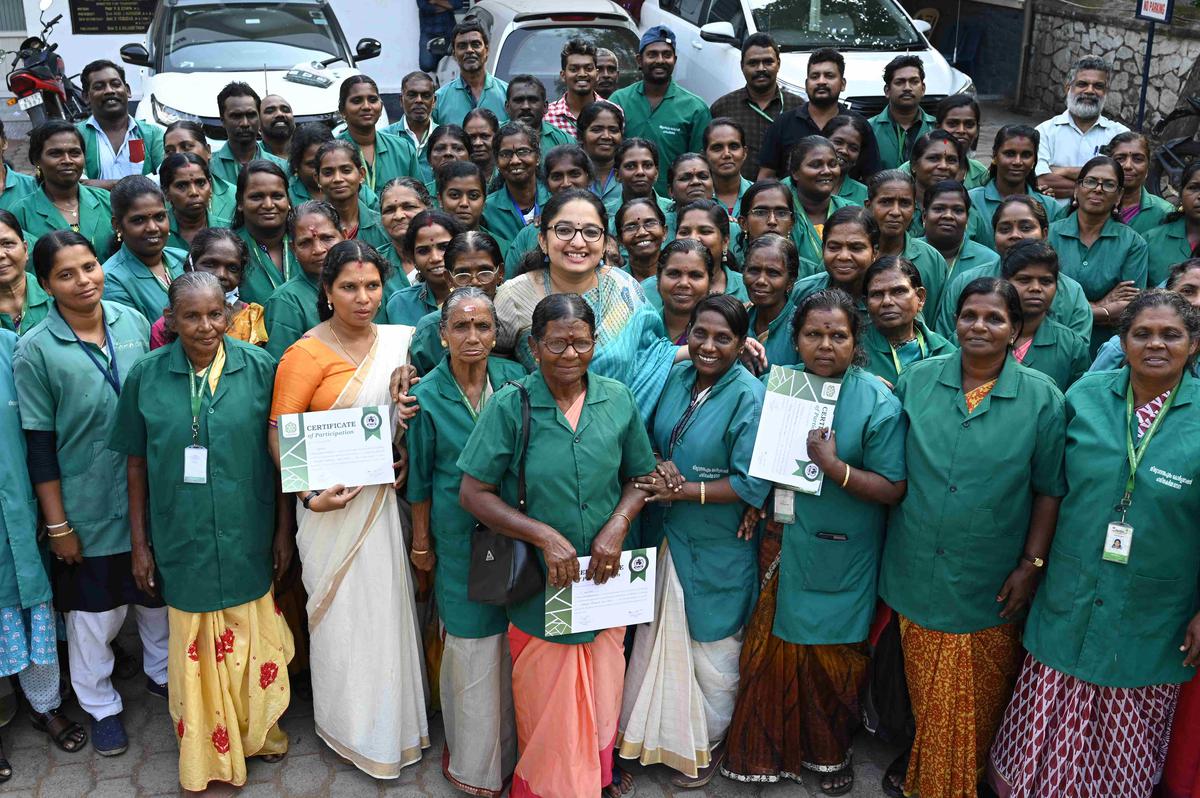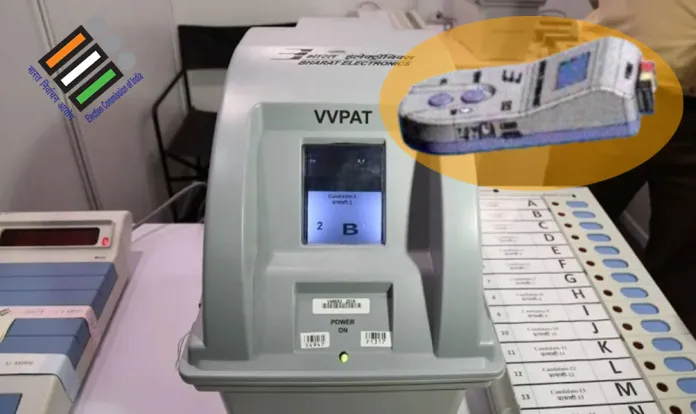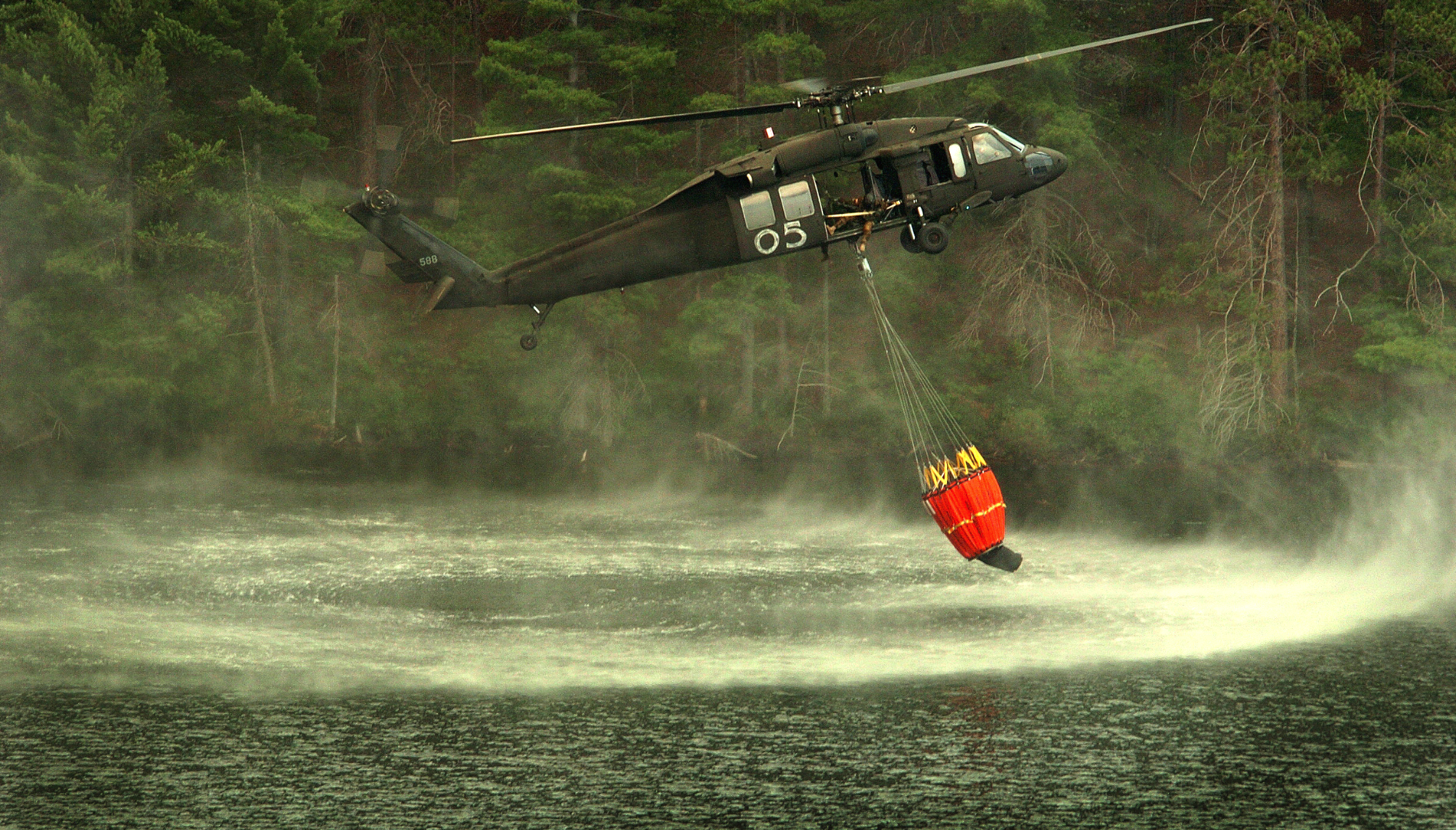Expanding Glacial Lakes in the Indian Himalayas: ISRO

- 27 Apr 2024
Why is it in the News?
Experts express concern over the ISRO analysis findings, indicating that the expansion of glacial lakes due to warming could result in cascading impacts in lower regions.
Highlights of the ISRO Report:
- The ISRO report said 601 glacial lakes, or 89 percent, have expanded more than twice, and 10 lakes have grown between 15 times and double their size. Sixty-five lakes have expanded 1.5 times.
- Of the 2,431 glacial lakes larger than 10 hectares, 676 have significantly expanded, and at least 130 of these lakes are in India 65 (Indus River basin), 7 (Ganga River basin), and 58 (Brahmaputra River basin).
- Elevation-based analysis shows 314 lakes are located in the 4,000 to 5,000 meters range, and 296 lakes are above 5,000 meters elevation.
What are Glacial Lakes?
- Glacial lakes emerge in hollows or basins shaped by glaciers' erosive force and are prevalent in areas where glaciers once existed or persist.
- They vary widely in size and shape, from tiny pools to expansive bodies of water.
- ISRO classifies them into four main types: moraine-dammed, ice-dammed, erosion-based, and 'others'.
- While vital as freshwater sources for rivers, glacial lakes also pose risks, particularly Glacial Lake Outburst Floods (GLOFs).
- GLOFs occur when these lakes discharge large volumes of meltwater, often due to natural dam failures, causing sudden and severe downstream flooding.
Formation Processes:
- Glacial Erosion: Glaciers, moving slowly, sculpt the landscape by eroding bedrock through abrasion and plucking, creating valleys and basins.
- Moraine Deposition: As glaciers move, they transport sediment, depositing it at their edges as moraines, which can act as natural dams, forming lake basins.
- Ice Melting: Rising temperatures or glacier retreat causes ice to melt, filling depressions created by erosion with water, and forming glacial lakes.
- Terminal Moraine Formation: Glaciers may leave behind ridges of sediment at their terminus, creating natural dams that trap water, forming terminal moraine lakes.
Utilization of Remote Sensing for Glacial Lake Monitoring:
- Monitoring glacial lakes in the Himalayan region presents challenges due to rugged terrain, making satellite remote-sensing technology indispensable.
- By analyzing satellite data, changes in glacial lakes can be tracked over time, offering insights into their evolving dynamics.
- This data is vital for understanding their environmental impact and devising strategies to manage risks such as glacial lake outburst floods (GLOFs) and adapt to climate change in glacier-influenced regions.
Mitigating Risks Associated with Glacial Lakes:
- Research suggests that reducing glacial lake levels by 10 to 30 meters can significantly alleviate downstream impacts, albeit not eliminate GLOF risks.
- One effective method involves siphoning off lake water using extended High-Density Polyethylene (HDPE) pipes.
- In 2016, the Sikkim State Disaster Management Authority successfully employed this technique to lower water levels in South Lhonak Lake, showcasing its practicality and efficacy in risk reduction efforts.
Haritha Karma Sena (HKS)

- 27 Apr 2024
Why is it in the News?
Adhering to green protocol, the Haritha Karma Sena workers have to ensure that the polling booths and surroundings are free of plastic and other waste materials in Kerala.
What is Haritha Karma Sena (HKS)?
- Haritha Karma Sena (HKS) is a professional team comprising Green Technicians and Green Supervisors, predominantly composed of Kudumbashree Women.
- Their duties include collecting, transporting, processing, recycling/disposing, and managing waste materials in collaboration with respective Local Self-Governments.
- Launched in 2013 by the Government of Kerala, it is part of the Haritha Keralam Mission.
What is the Haritha Keralam Mission?
- It is a comprehensive initiative aimed at transforming Kerala into a clean and green state.
- The mission strives to eliminate garbage, promote sustainable waste management practices, generate employment in the waste management sector, and raise environmental awareness.
What is the Success Story of the HKS?
- The 35,500 members of the HKS have tirelessly worked to change societal attitudes towards household waste management.
- Waste collection and segregation have become respected and remunerative occupations.
- The transition from centralized waste treatment to decentralized management reflects a community-driven approach to sustainability.
- Kudumbashree's empowerment of women and the government's emphasis on awareness and training are crucial for sustaining these efforts.
What More Needs to be Done?
- Future plans include improving segregation methods, promoting diversification, and expanding waste storage infrastructure.
- These initiatives reflect a holistic approach to waste management and economic development.
Symbol Loading Units (SLUs)

- 27 Apr 2024
Why is it in the News?
Recently, the Supreme Court rejected the plea for full verification of VVPAT slips against EVM counts and directed the ECI to seal the Symbol Loading Unit (SLU) for 45 days post-election results announcement.
What is a Symbol Loading Unit (SLU) and How Does it Work?
- Symbol Loading Units (SLUs) were introduced around the same time as VVPATs, a little over a decade ago.
- VVPATs help voters verify their votes, they see a slip with a printed image of the party symbol they voted for.
- But for the VVPAT to print a symbol correctly, information pertaining to the list of candidates and their symbols must be loaded onto the VVPAT machine in the correct order.
- This is where the Symbol Loading Unit, or SLU, comes in.
- The introduction of VVPATs necessitated the use of SLUs.
- The SLU is used to load the symbols of the candidates onto the VVPAT.
- It is a matchbox-sized device that is first connected to a laptop or personal computer, from where a symbol-loading application is used to load a bitmap file containing the candidates’ names, serial numbers, and symbols.
- The SLU is then connected to the VVPAT to transfer that file onto the paper audit machine.
- This is done under the supervision of a district election officer.
At Which Point in the Election Process Are SLUs Used?
- The SLUs come into the picture only a few days before polling in a particular seat, when the EVMs are being commissioned and the list/ order of contesting candidates is decided and set on the ballot unit and the VVPAT.
- Candidate-setting can happen at any time from five to two days before voting at a seat.
- Once the SLU is used to load symbols onto the VVPAT, the EVM is ready for use.
- After this, the SLU is of no relevance to the actual voting process.
What Happens to an SLU After Symbols Are Loaded?
- Typically, a small number of SLUs are enough to load symbols onto all VVPATs for a seat.
- According to EC officials, it takes an SLU two to three minutes to load each VVPAT.
- Once the symbol-loading is complete, the SLUs are handed over to the concerned district election officer for safekeeping.
- They remain in the officer’s custody until the day after voting. Afterward, the SLUs are released to the engineers of the two EVM manufacturers, Bharat Electronics Ltd (BEL) or Electronics Corporation of India Ltd (ECIL), so they can be used to load symbols onto VVPATs for other seats in subsequent phases.
- Thus, in a multi-phase election like the ongoing one for the 18th Lok Sabha, an SLU is typically reused after one phase of polling to load symbols onto VVPATs meant for other seats in subsequent phases.
Bambi Bucket

- 27 Apr 2024
Why is it in the News?
Recently, an Indian Air Force MI 17 V5 helicopter, equipped with a Bambi Bucket, was deployed to combat the forest fires in Nainital district, Uttarakhand.
What is a Bambi Bucket?
- Bambi Bucket is a specialised aerial firefighting tool that has been in use since the 1980s.
- It is essentially a lightweight collapsible container that releases water from underneath a helicopter to targeted areas.
- The water is released by using a pilot-controlled valve.
- One of its key features is that it can be quickly and easily filled.
- The bucket can be filled from various sources, including a lake, river, pond, and swimming pool, which allows firefighters to swiftly refill it and return to the target area.
- Bambi Bucket is available in a variety of sizes and models, with capacities ranging from 270 liters to more than 9,840 liters.
How was the Bambi Bucket Invented?
- The Bambi Bucket was invented by Don Arney, a Canadian business, in 1982.
- Arney came up with the idea after he realised that the aerial firefighting water buckets in use at the time were not efficient and had a high failure rate.
- These water buckets were generally made of “solid fiberglass, plastic, or canvas with metal frames” and were “too rigid to fit inside the aircraft” and had to be “trucked to fire sites or flown in on the hook of a helicopter thereby slowing the aircraft down.
- Another issue was that the water dropped from these containers used to get dispersed into a spray thereby reducing impact.
- Bambi Bucket does not have these limitations.
- One, it can be stored within the helicopter until development.
- Two, it discharges a solid column of water, “resulting in a more accurate and effective water dump, less evaporation on the descent, and greater impact force.
- It was an instant success and began to be widely used for firefighting.
- Today, Bambi Bucket is used in more than 115 countries around the world by more than 1,000 helicopter operators.
Carnation Revolution

- 27 Apr 2024
Why is it in the News?
Recently, Portugal commemorated its 50th anniversary of Portugal's Carnation Revolution – the peaceful uprising that toppled a dictatorship and ended a decade of colonial war.
About the Carnation Revolution:
- The Carnation Revolution, also known as the 25th of April, was a pivotal event in Portugal's history that marked the transition from an authoritarian regime to a democratic government.
- On April 25, 1974, a group of military officers orchestrated a nearly bloodless military coup, overthrowing the Estado Novo dictatorship that had ruled Portugal for over four decades.
- The revolution aimed to accelerate decolonization, end ongoing wars through negotiations, and improve socio-economic conditions within Portugal.
- This event not only transformed Portugal's political landscape but also had significant implications for the nation's African colonies.
- Several factors contributed to the success of the Carnation Revolution, including widespread discontent with the authoritarian regime, a costly and unpopular colonial war, and the growing desire for democracy and improved living conditions.
- The coup leaders, known as the Armed Forces Movement (MFA), garnered support from various factions, including the Communist Party, socialists, and moderate democrats.
- The Carnation Revolution was named after a Lisbon flower seller who offered red carnations to soldiers, which were then placed in the barrels of their rifles.
- This iconic gesture symbolized the peaceful nature of the coup and solidified the carnation as a symbol of Portugal's democratic movement.
- The 50th anniversary of the Carnation Revolution celebrated on April 25, 2024, signifies the enduring impact of this historic event on Portugal's political trajectory and its relationship with its former colonies.
